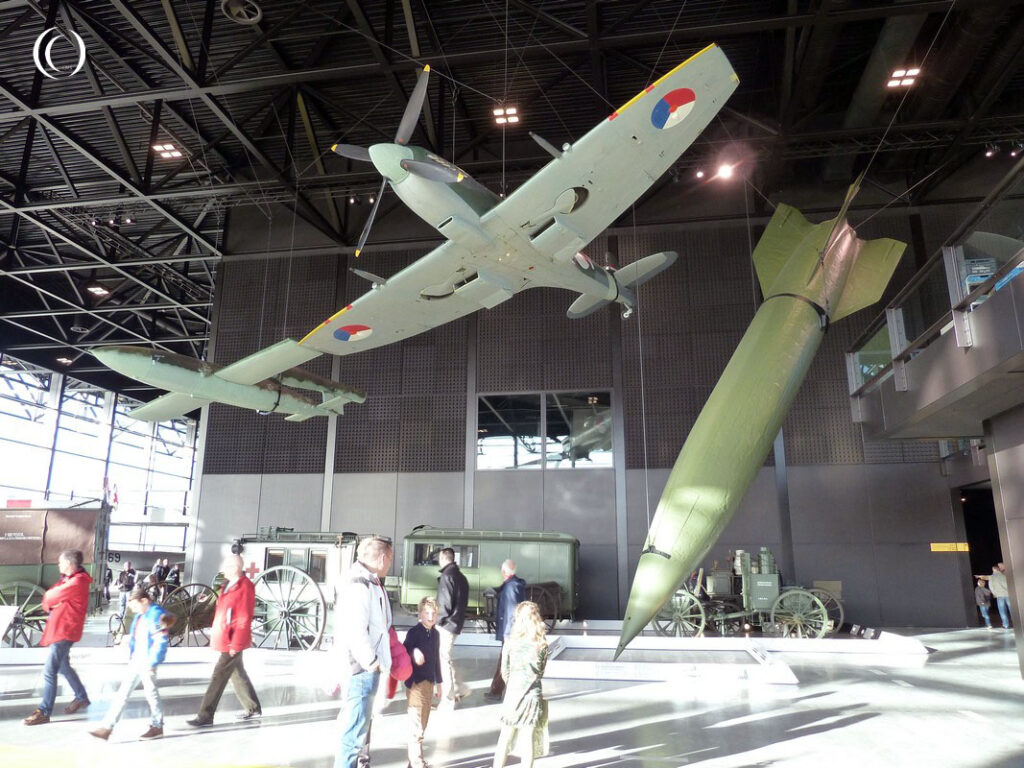
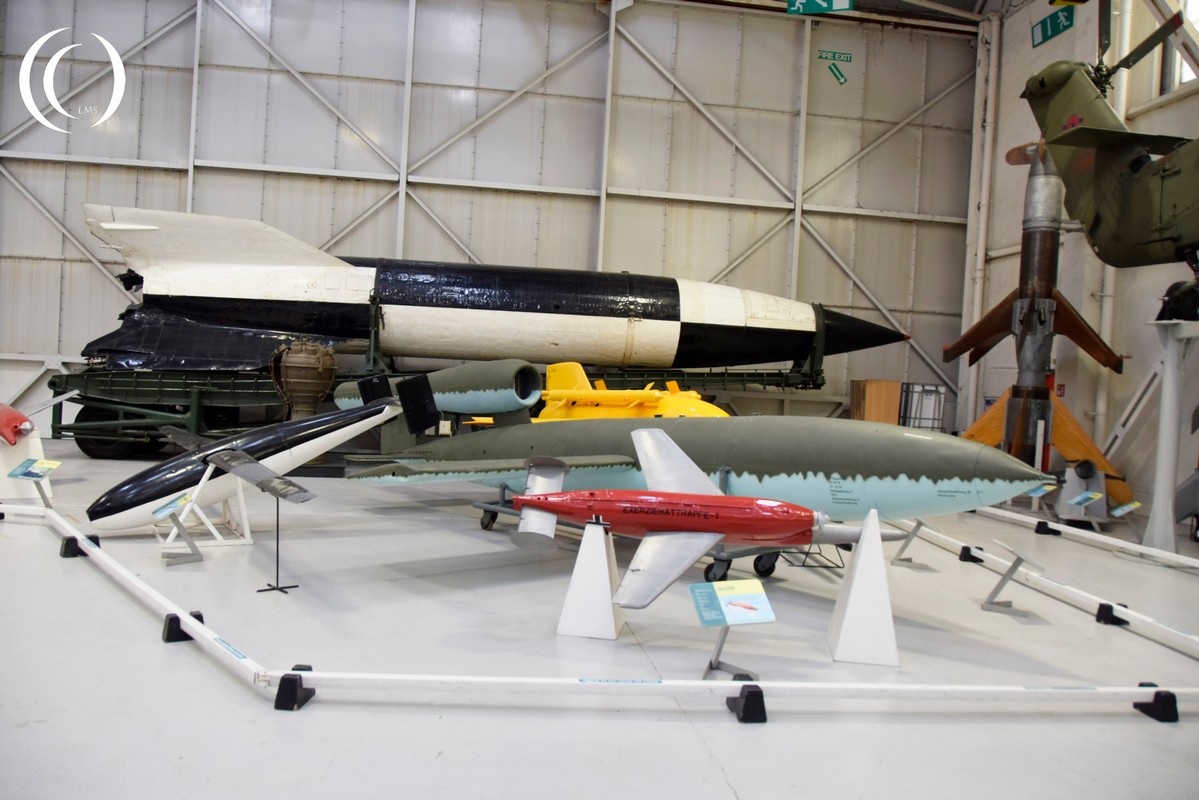
Aggregate A4 , V2 Rocket – V1 Flying Bomb – Hagelkorn BV246 – Henschel Hs 298 and Rheintochter – photo 2017
Aggregat A4
The V2 rocket’s original designation was Aggregat A4 (Eng. Aggregate). This long range ballistic missile was developed by Wernher von Braun and artillery Captain Walter Dornberger. Wernher von Braun Thesis was the solution to the liquid-fueled rocket propellant written in 1934 and kept secret until 1960. From the start they tested solid fueled rockets at the Kummersdorf test facility south of Berlin. The Aggregate was developed and successful and less successful series were built and tested, A1 to A5. Wernher von Braun and Walter Riedel started thinking about a much bigger rocket. They moved to the Peenemünde army research center at Prüfstand VII (Eng. test area nr. 7) for further development and testing. Many more scientists worked on the rockets of course, and most of them ended up in allied workshops after the war due to Operation Paperclip or its Russian counterpart.
At first Adolf Hitler wasn’t impressed by this new rocket development, he considered it artillery shells with a longer range and more costs.
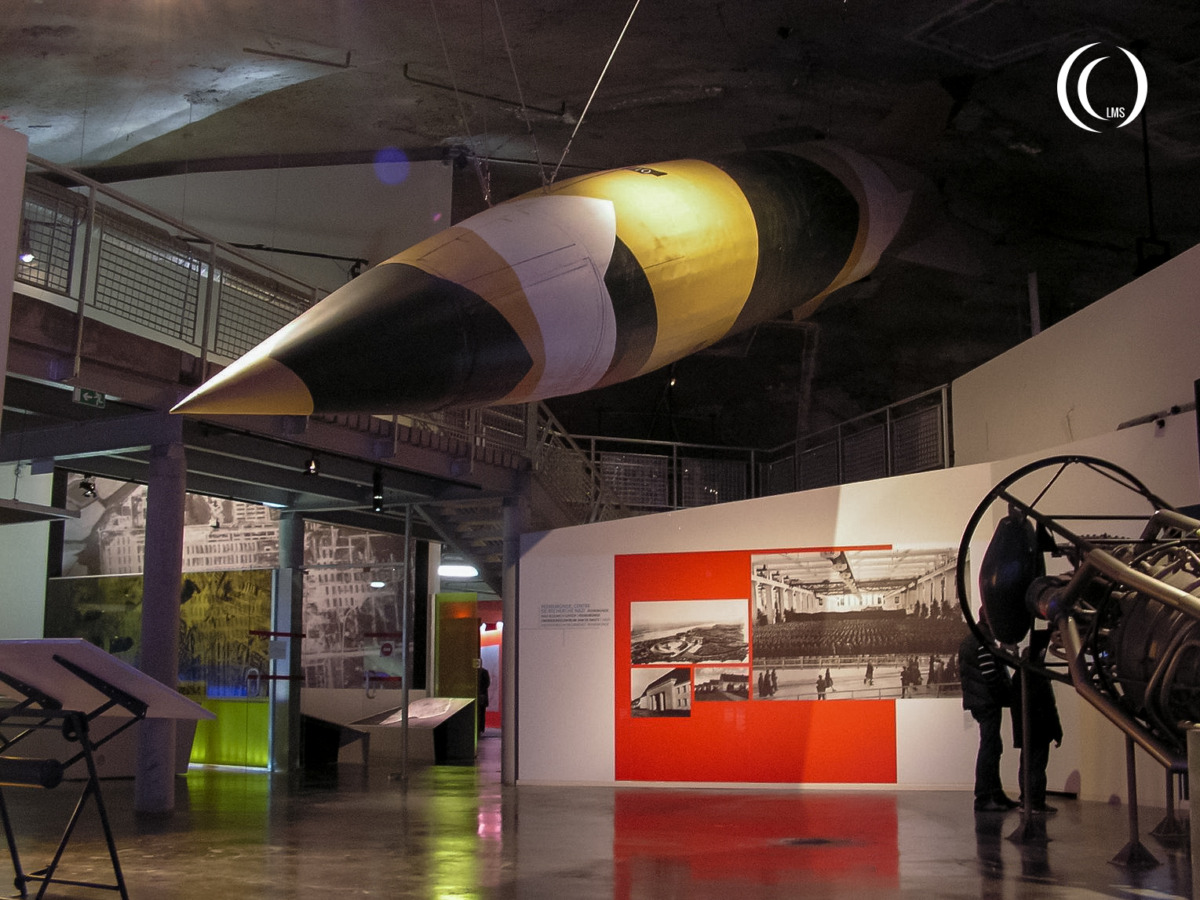
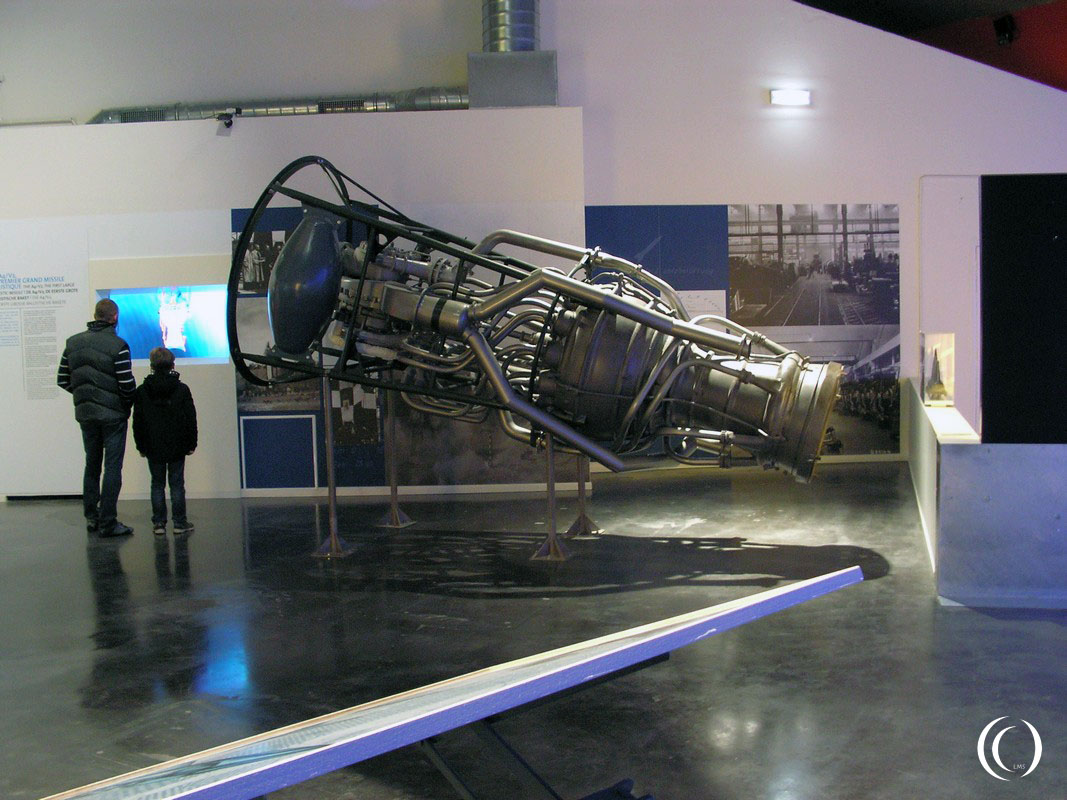
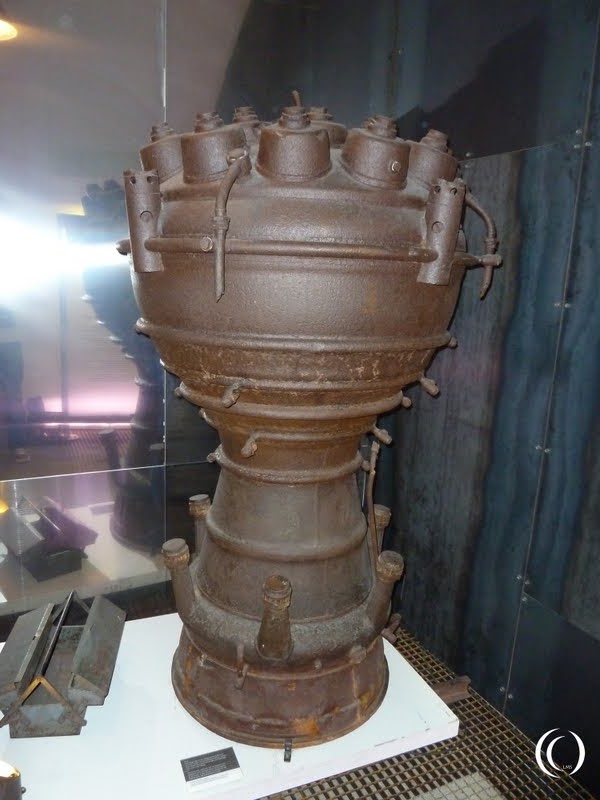
Germans in Space
At the Peenemünde army research center all kinds of rockets were tested. The Aggregate A4, was mainly built by slave workers in Dora Mittelbau, the harsh work at this slave labor camp took many lives. Slowly the rockets became more stable and flights succeeded. The German scientists were the first to encounter difficulties re-entering orbit without burning or breaking up.
There were four test sites, six if you count the after war American and Russian test locations as well. Peenemunde, Blizna (nowadays Poland) the Tuchler Heide and Cuxhaven. Hermann Goering attended tests at the Peenemünde army research center on 30 October 1944. When seeing the rocket launch he said “That’s terrific! We must have that at the first Party Rally after the war!”. At the test site were Walter Dornberger (Aggregate A4, V2 rocket) and Dr. Max Kramer (Ruhrstahl Kramer X-4 and Ruhrstahl Fritz X glide bomb). Looking at Walter Dornberger Reichsmarchall Goering blurted: “Why is it that this fellow manages all right and you (looking at Dr. Max Kramer) don’t? ”Let him show you how it ought to be done.”
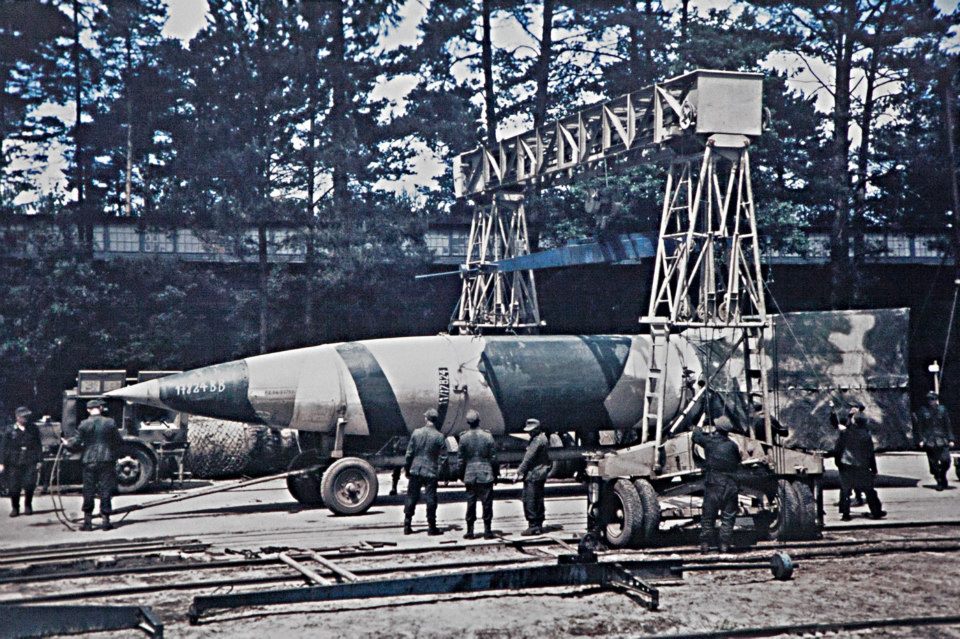
On June 18 1944 test rocket MW 18012 reached an altitude of 127 kilometers in a vertical shot. It was the first Aggregate A4 to cross the Karman Line (which wasn’t set back then). And the first manmade object in space.
On June 20 1944 test rocket MW 18014 reached a record height of 174,6 kilometers. This is considered wrongfully as the first manmade object, the first Aggregate A4, in space.
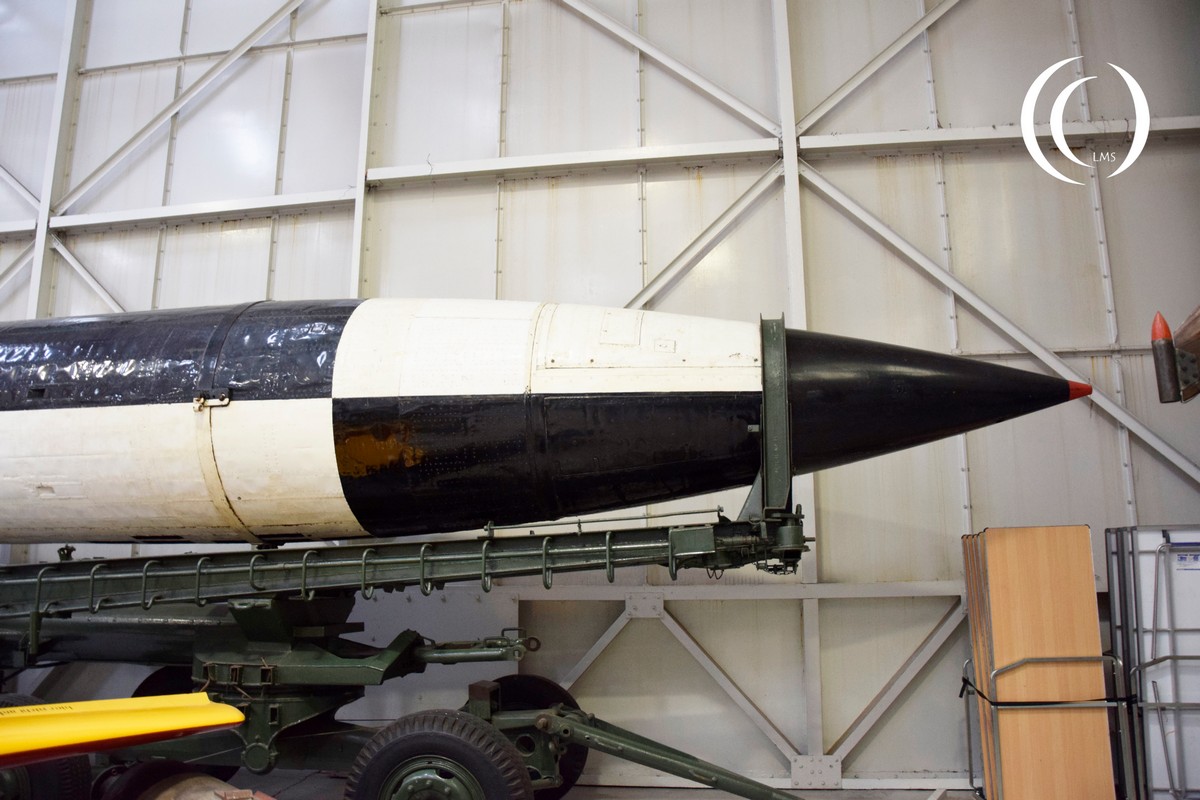

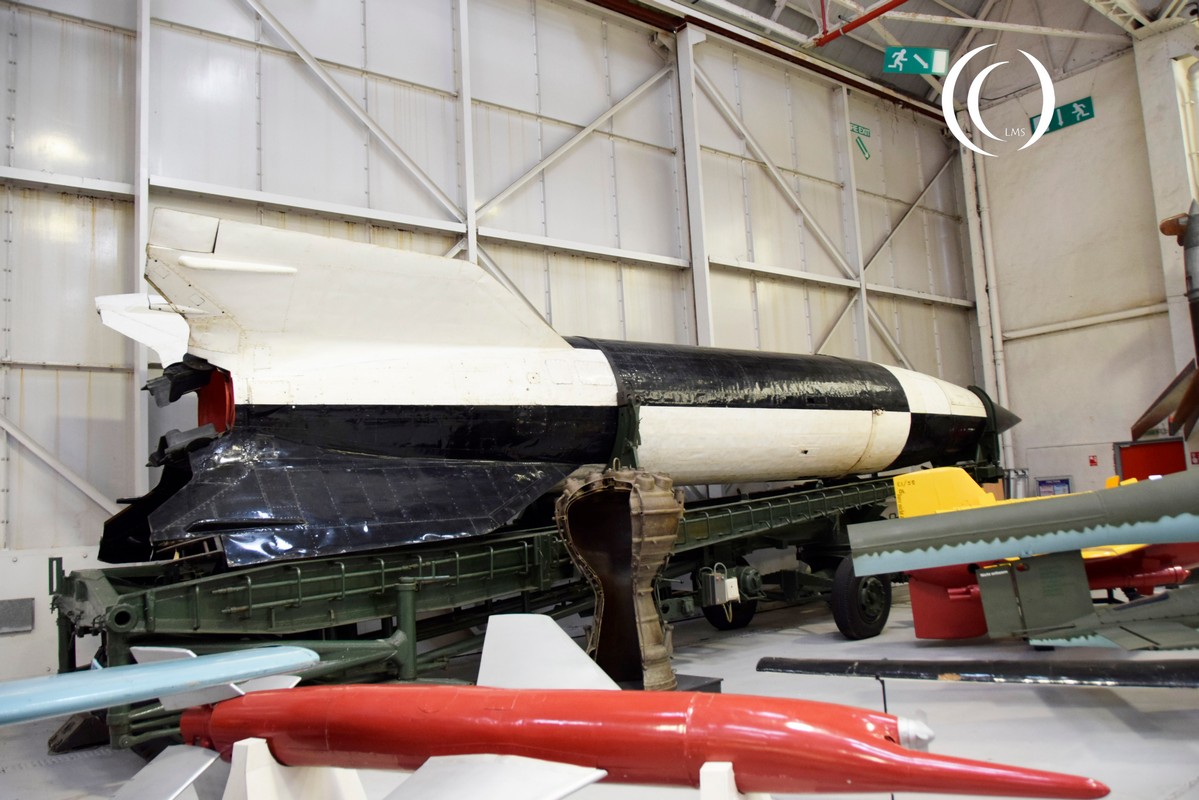
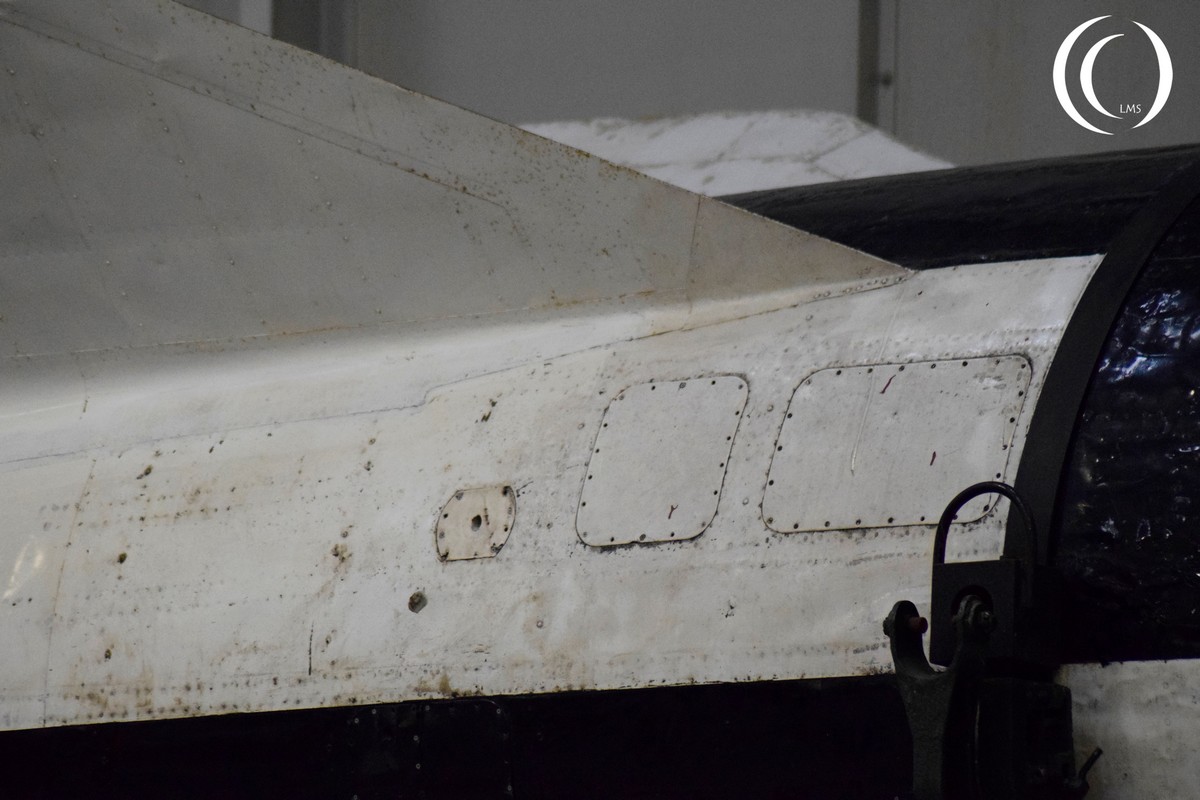
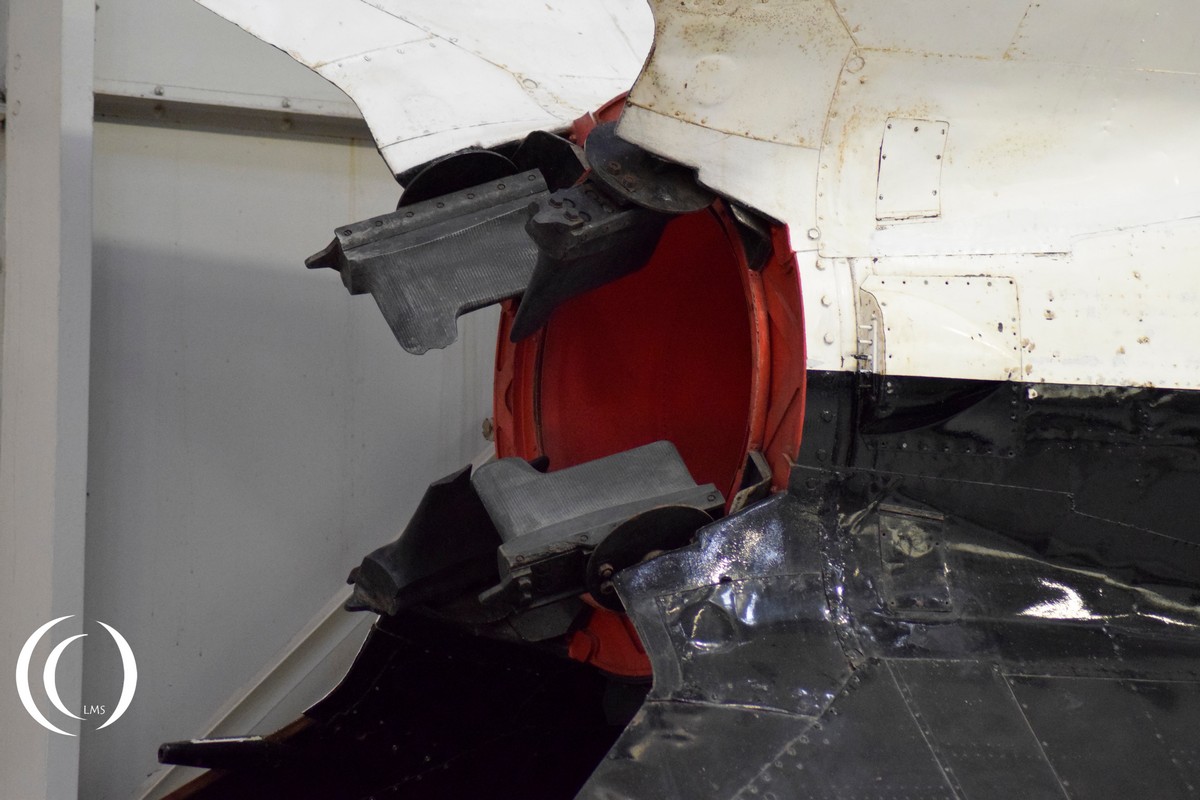
From Aggregate A4 To V2
After the lost Battle for Britain Adolf Hitler was not able to get air superiority and could not put pressure on the British mainland any longer. Walter Dornberger mentioned; “Germany does not need air superiority, it no longer exists with the use of long range rockets”.In 1943 the Nazi’s embraced the new wonder weapons and the first Aggregate A4 dropped its 1000 kilograms payload on the London district Chriswick on September 8 in 1944.
Propaganda minister Joseph Goebbels renamed the A4 to Vergeltungswaffe, Vengeance or retaliation weapon number 2, short V2 (Eng. V-2).
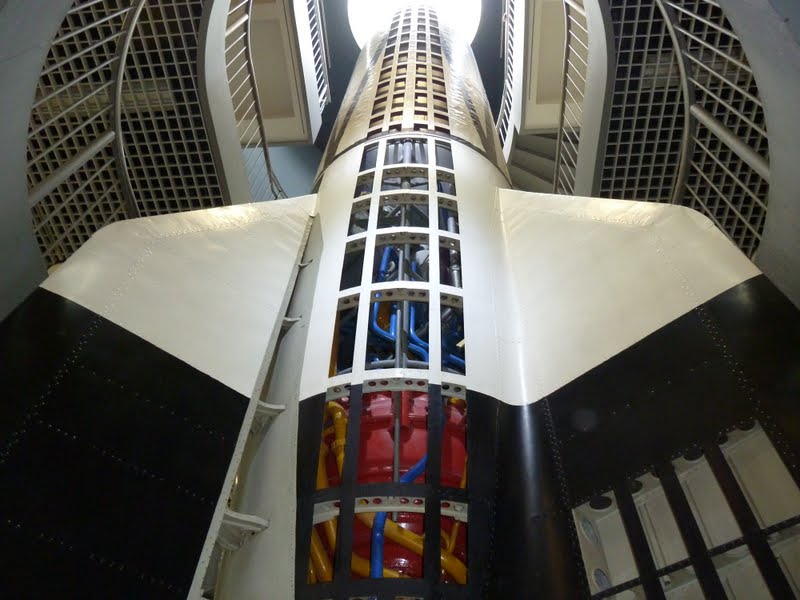
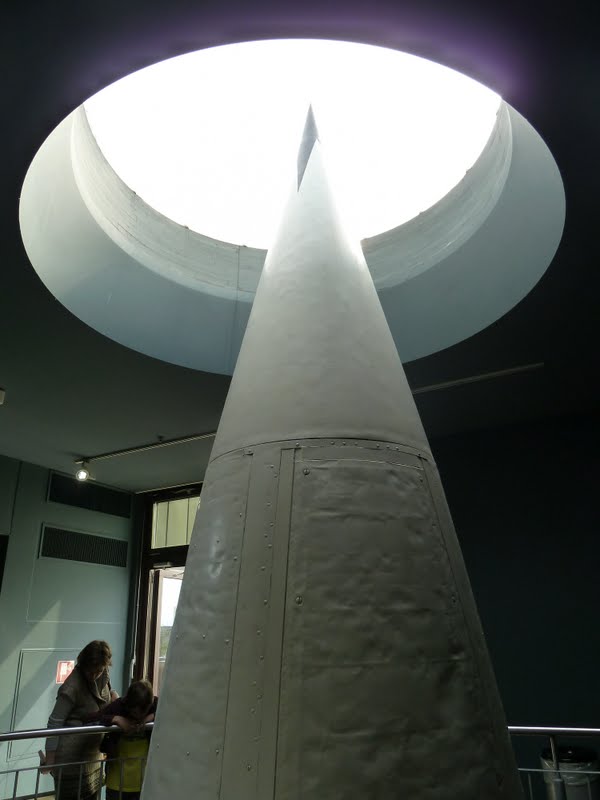
After the deployment of the V2 rockets the production line of Dora Mittelbau alone was no longer sufficient to supply the rockets. Specialized bunker-like factories were set up to assemble the V2 rockets. A concrete dome was built in d’Helfaut – Wizernes northern France, La Couple codenamed Bauvorhaben 21 or Schotterwerk Nordwest. And the Blockhaus d’Éperlecques near Watten in Northern France, code named Kraftwerk Nord West.
Multiple factories delivered parts and fuel to the assembly lines. After these sites were discovered by the allies they bombed them with the 5400 kilograms heavy Tallboy bombs. Germany abandoned the idea of fixed launch locations and switched to mobile launch pads from The Hague in the Netherlands as example.
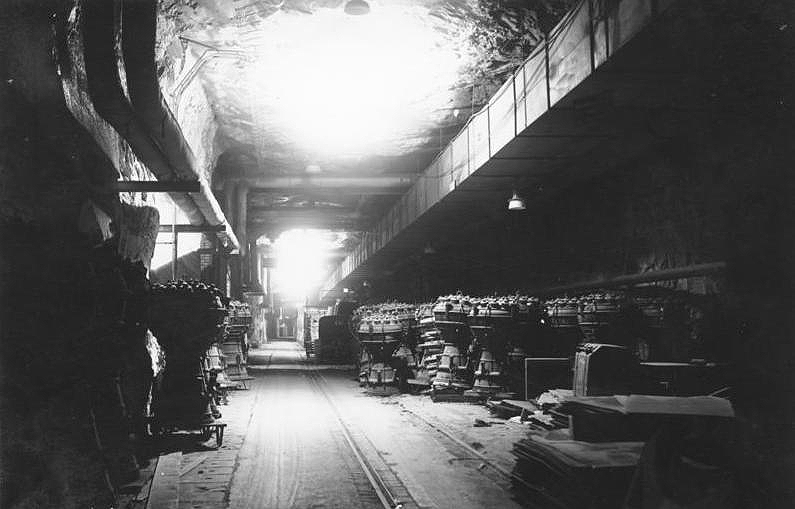
Specifications of the Aggregate A4 – V2
The V2 was a 14 meters long ballistic missile. It weighed about 12.800 kilograms and had a warhead of 1000 kilograms filled with 910 kilograms of Amatol. Some sources mention that the Amatol weight was lessened to 740 kilograms due to the strengthening of rocket parts for re-entering orbit.
The V2 had a 80 to 88 kilometers service ceiling and a maximum speed of 5760 km/h – Mach 5,7 which reduced to 2880 km/h on impact. It reached a distance of 300 to 330 kilometers.Its speed made It unstoppable, no wing-tipping Supermarine Spitfire (this was done to intercept a Fieseler V1 Buzz Bomb), and no anti-aircraft gun could stop it.
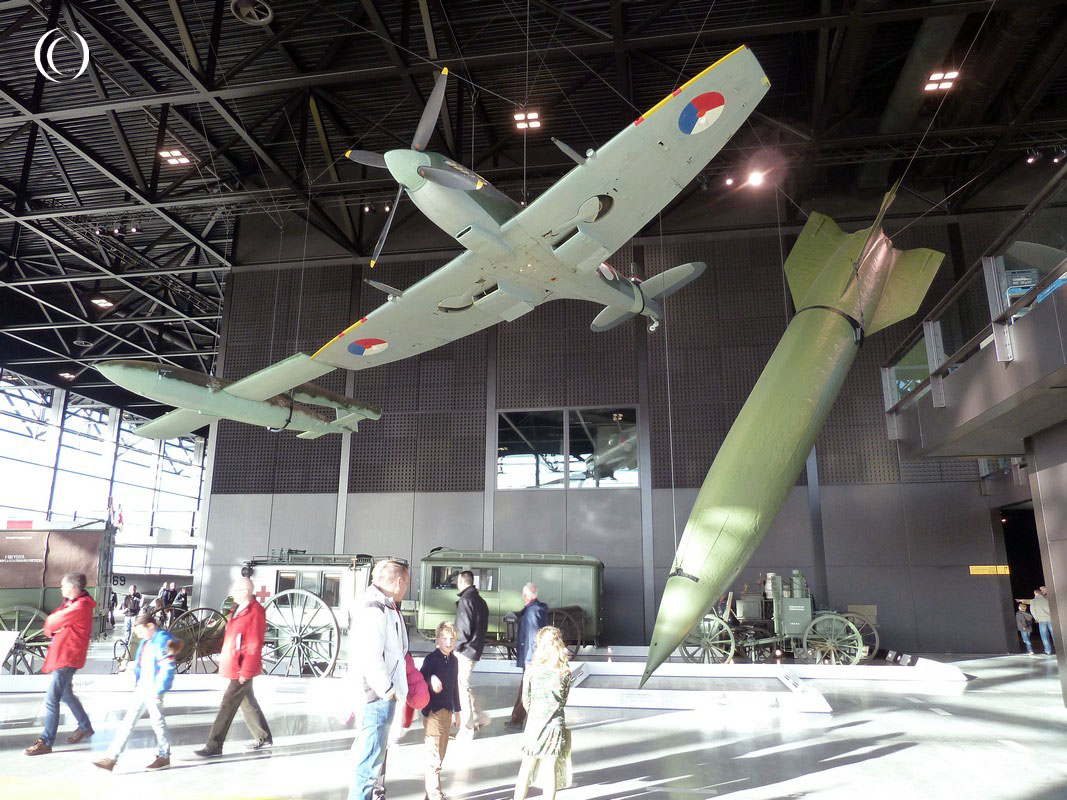
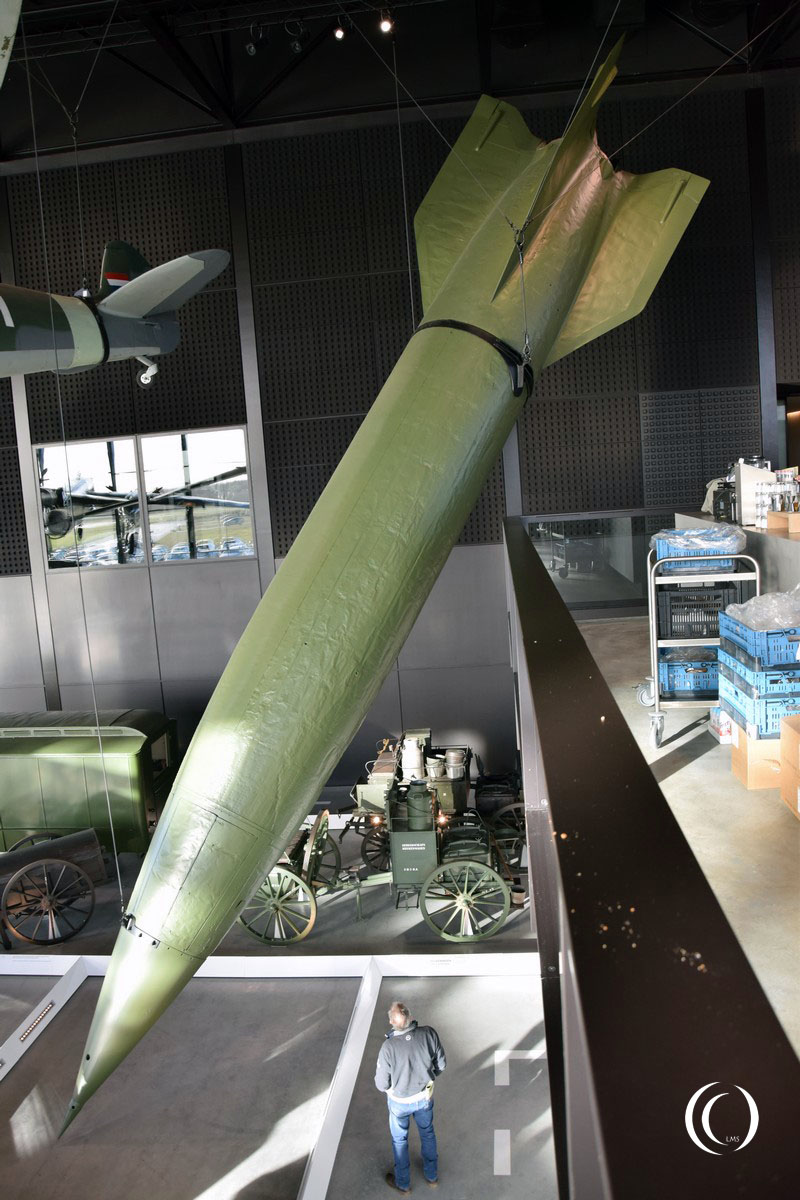
the V2 rocket at war
The V1 cruise missile used fixed firing positions where the V2 used mobile launch pads. They were set up just before launch, all kinds of specialised vehicles, trailers and cranes (all mobile) came at one coordinated location. After setting up the rocket it was fueled and launched. The crew disbanded with their trucks and specialized vehicles and the site was cleared within 2 hours.
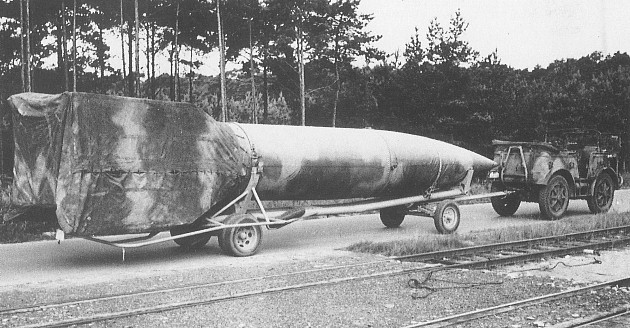
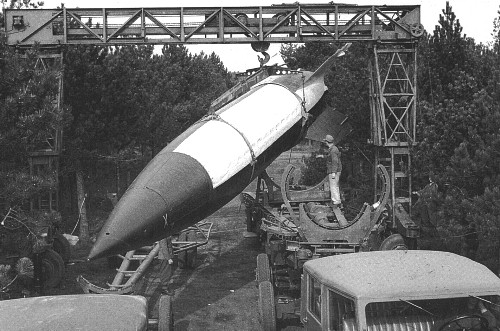
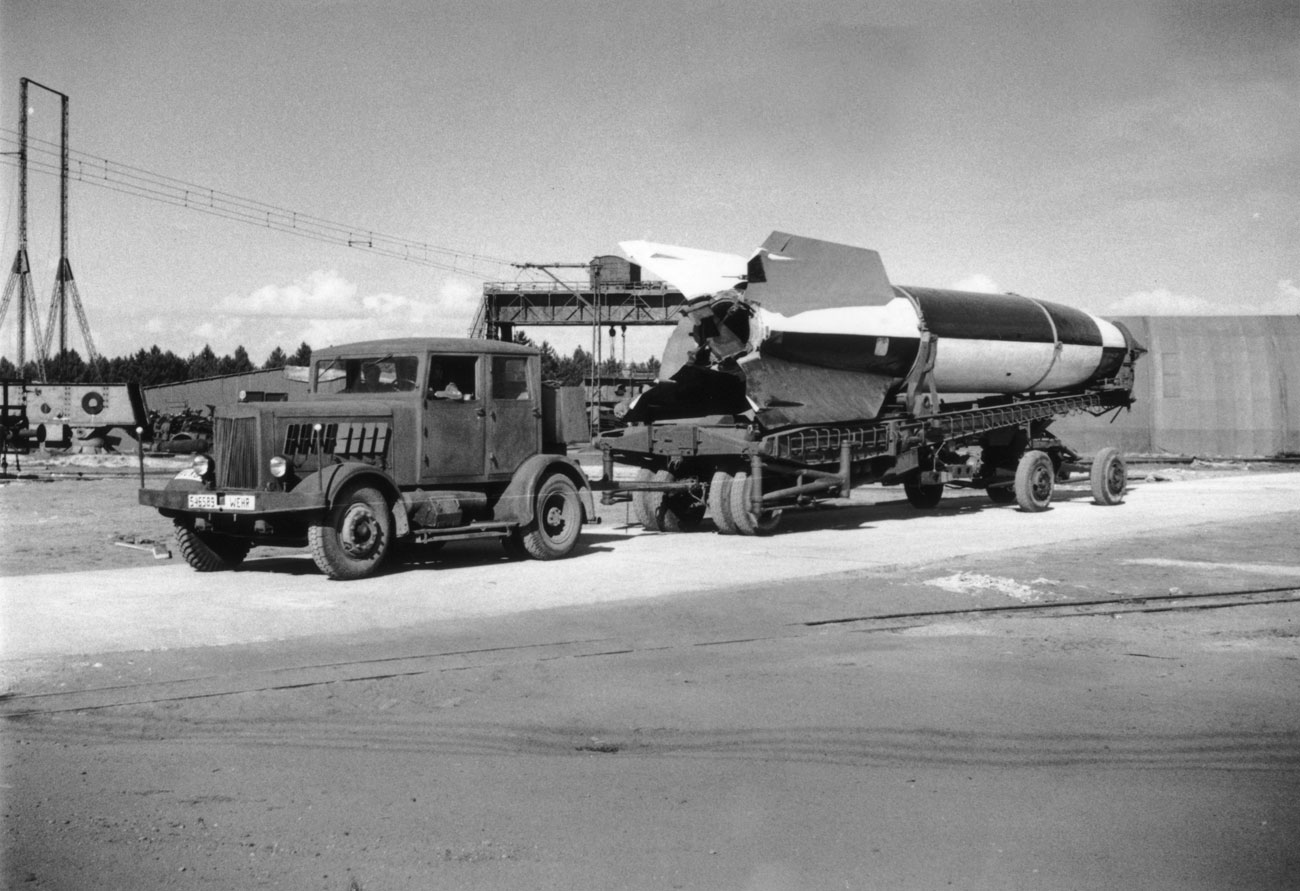
The Vidalwagen was for transport long distances, upon arrival a mobile Strabokran was used to place the V2 on a Meilierwagen. The Meilerwagen was set in position and erected itself with the V2 on it. The V2 was set up on a special firing table. Fuel trucks and a mobile launch command post were brought in, and within 110 minutes the rocket was ready to launch. This versatility was a burden for the allied forces, the mobile launch positions were very hard to take out. Allied fighter planes were lucky if they spotted a V2 rocket just before it was launched.
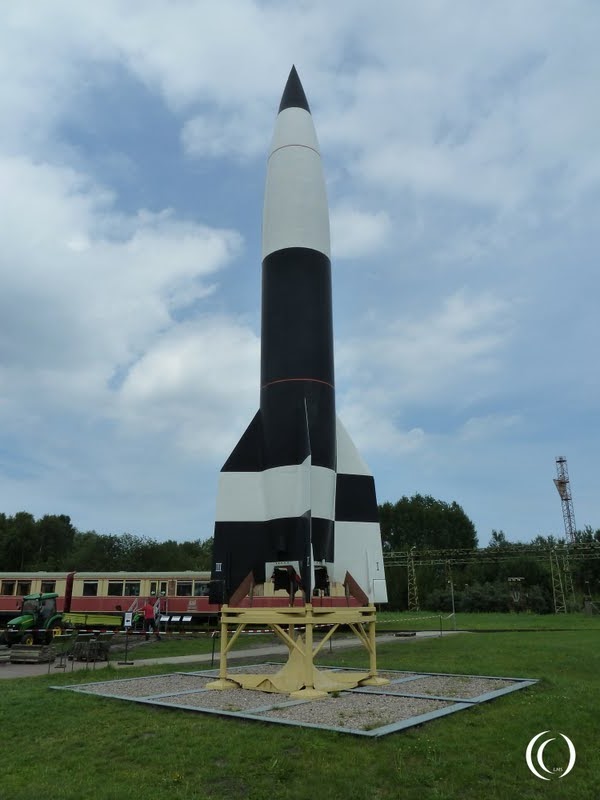
Throughout the war at least 3172 V2’s were launched at Allied positions or forces. A lesser known fact is that most V2 rockets came down on Antwerp, Belgium instead of London.
V2 attacks on England – 1402 rockets, 1358 on London.V2 attacks on France – 76 rockets, 22 on Paris, 25 on LilleV2 attacks on Belgium – 1664 rockets, 1610 on AntwerpV2 attacks on the Netherlands – 19 rockets on MaastrichtV2 attacks on Germany – 11 on the Ludendorff bridge of Remagen
After the Second World War
When the war ended the success of the V2 rocket continued. The German scientists were taken by allied forces and in a weird way helped to prolong hostilities between Russia and America. All kinds of ballistic missiles were built based on German design and knowledge, and with their own developed missiles of course, to step into the Cold War.
The German scientist also worked with the U.S. to get manned flights into space and to the Moon. There were a lot of “firsts” for the German scientist during the Second World War and beyond. As a matter of fact, a V2 rocket fired from the White Sands testing grounds by the United States Army, launched on 24 October 1946, made the first picture ever in space from our beloved Earth.

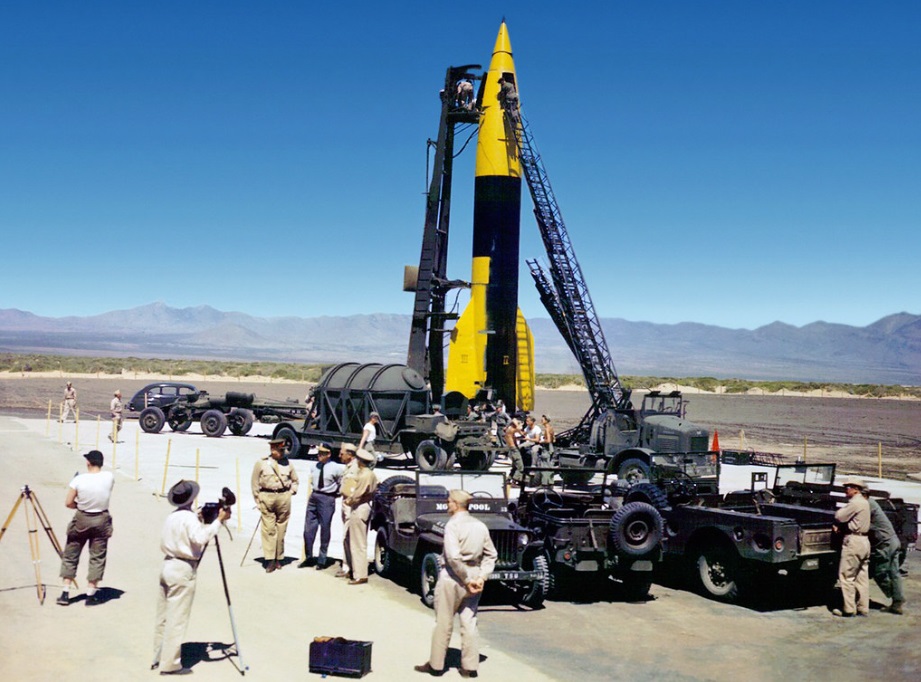
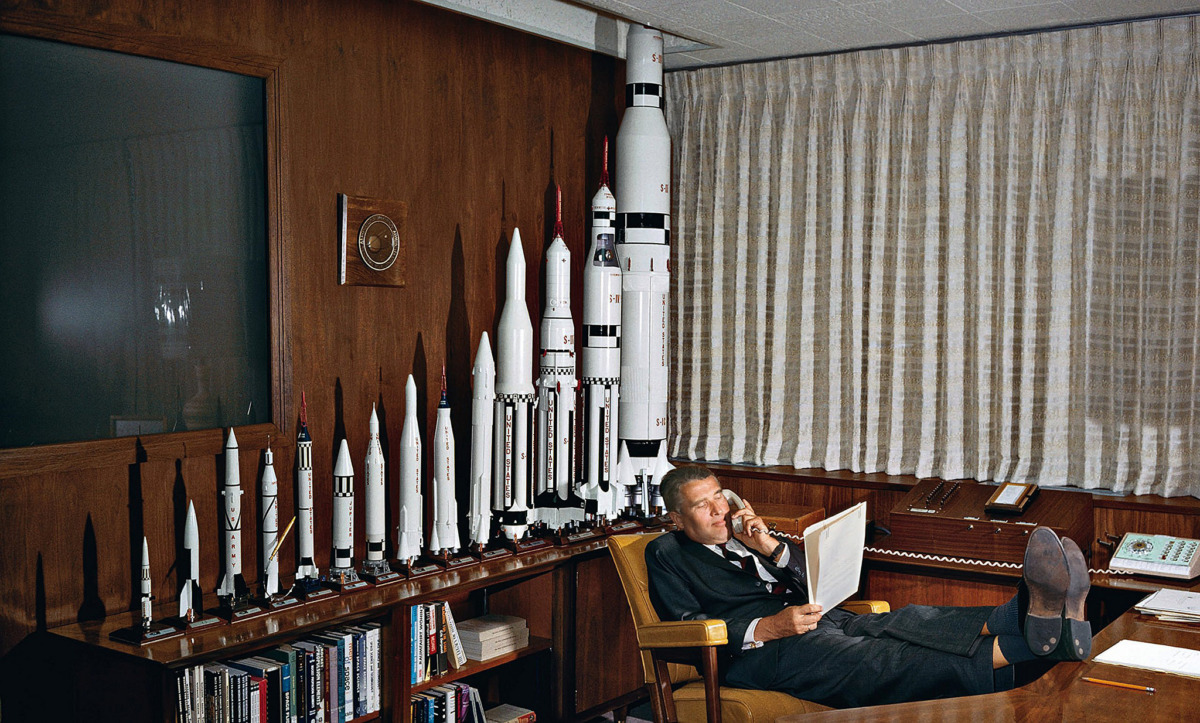
Werner von Braun received a lot of credit for helping Nasa to get the first man to the moon. Walter Dornberger worked on the North American X-15, The Boeing X-20 Dyna Soar. He had a prominent role and ideas which led to the development space shuttle, he developed the world’s first guided nuclear air-to-surface missile ASM-A-2 (GAM-63 RASCAL).
For use of their knowledge they did not face trial like other Germans in Nuremberg who were directly or indirectly involved in the death of forced laborers and civilians.
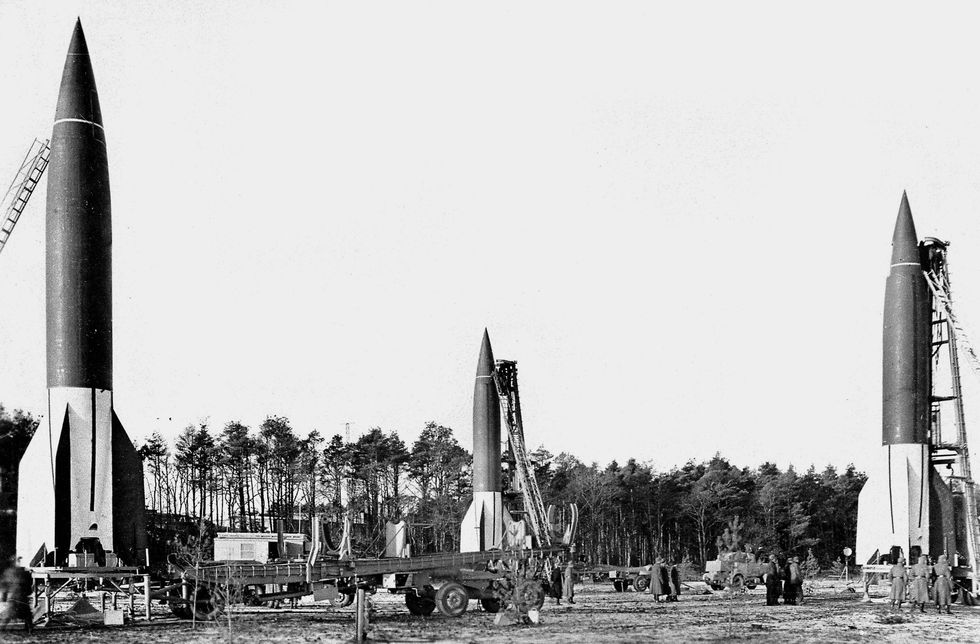
Photos from the V2 Rocket were taken in:
Deutsches Museum Munich – Germany (2012)Historisch- Technisches Museum Peenemünde, Germany (2012)NMM – National Military Museum – Soesterberg Air Base Park, Netherlands (2015)La Coupole V-2 museum – Helfaut-Wizernes, France (2009)Royal Air Force Museum Cosford – England (2017)